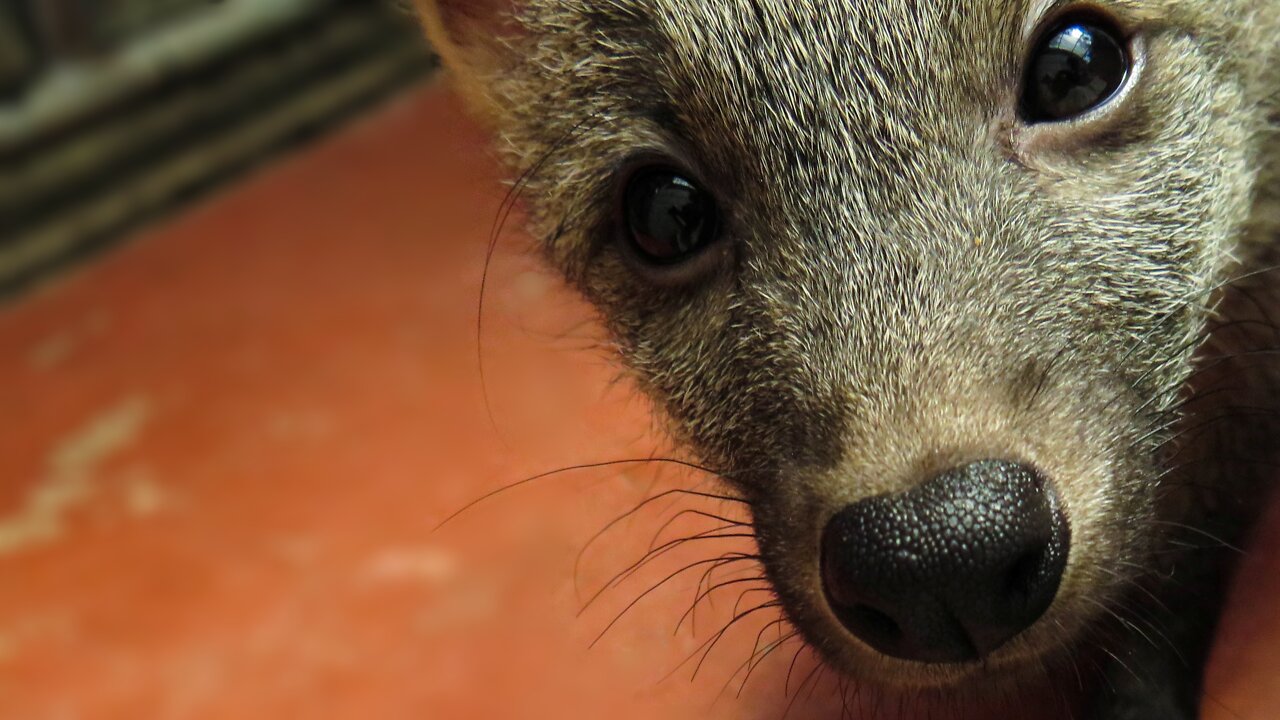Premium Only Content

Adorable rescued Crab-eating Fox pup wants to catch what's making the weird noise
These Crab-eating Fox pups (Cerdocyon thous) have lost their mothers, so they had to be rescued and now live at a Wildlife Refuge. They are wild pups, but pups nonetheless, so they are curious and playful, and this brave one wants to find out what this weird noise is! The pups are still in quarantine, which is why they are not in a proper enclosure yet.
The Crab-eating fox is the sole extant member of the Cerdocyon genus. Although it is called "fox", it doesn't belong to the fox-like tribe Vulpini, but shares the Canini tribe with 21 dog-like species, such as wolves, jackals, coyote, bush dog, wild dog, maned wolf, and the domestic dog, along with some other small canids that are called foxes, such as the Andean Fox, South American Gray Fox, Pampas Fox, Sechuran Fox, and Hoary Fox.
It is mostly endemic to South America, but it has been sighted in Panama since 90s. It can be found in most South American habitats, such as savannas, tropical savannas such as the caatinga, plains, and campo, woodlands, subtropical forests, and prickly, shrubby thickets. It is only absent from rainforests, high mountains, and open grassy savannas, as well as urban areas.
Although, as the name suggests, it feeds on crabs, the Crab-eating Fox is actually an omnivore, and its diet may vary according to location. It is opportunistic, eating insects, rodents, birds, turtle eggs, tortoises, fruit, bird eggs, crustaceans, insects, lizards and carrion. It is an important species for biological control.
The illegal wildlife trade is the third most valuable illicit commerce in the world, losing only to drugs and weapons. That, along with loss of habitat by deforestation, fires, etc., results in an enormous amount of animals in need of rescuing. Only 1 in 10 animals survive trafficking! Do not support the pet trade! Animals should be free!
-
 0:33
0:33
NataliaCara
1 year agoWild Maned Wolf roar-barking
3382 -
 46:06
46:06
Steven Crowder
4 hours agoPREMIUM ONLY: Friday Behind the Scenes & Scrapyard Combo Grab Bag!
58K39 -
 1:30:21
1:30:21
MTNTOUGH Fitness Lab
3 hours agoLeadership Lessons from a Navy SEAL Officer: Sean Glass on Leading in Combat & Business |MTNT POD#92
7.5K -
 21:52
21:52
Brewzle
2 hours agoI Went Bourbon Hunting For RARE Bottles in Kentucky
9.21K1 -
 13:35
13:35
ROSE UNPLUGGED
5 hours agoBlackRock, Vanguard Accused of Antitrust Violations By Texas
8962 -
 1:27:11
1:27:11
Robert Gouveia
3 hours agoTrump Targets TISH; Party Time at Mar-a-Lago; Border Patrol CRUSHED in RAZOR WIRE Ruling
30.6K30 -
 1:59:55
1:59:55
LFA TV
15 hours agoMACY'S DAY PROTEST! | LIVE FROM AMERICA 11.29.24 11am EST
30K38 -
 11:45
11:45
Chris From The 740
22 hours ago $5.92 earnedThe AK Projest Is Finished - So Let's Check It Out
26.7K2 -
 LIVE
LIVE
SilverFox
16 hours ago🔴LIVE - WoW NEWBIE - Level 15 Warrior
313 watching -
 DVR
DVR
wyspers
3 hours ago1st Rumble Stream! - Black Friday - College Football 25 - Dynasty year 2
23.7K1